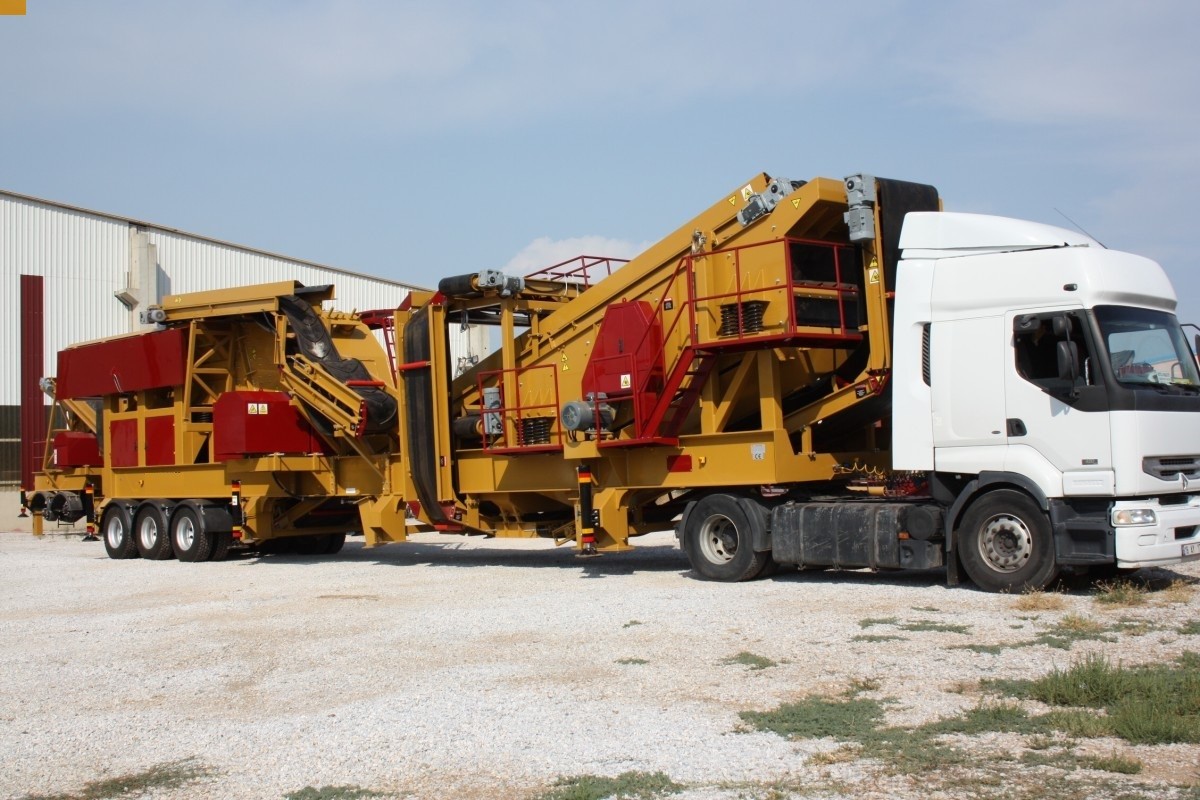A crushing, grinding, and screening plant is a production facility where various aggregates (sand, gravel, stone, etc.) are produced, used mainly in construction and roadworks. This facility is used to improve the physical and chemical properties of stones through specific processes, ensuring that they are broken down and sized appropriately for the intended use. Typically, large stones are crushed and ground to produce materials of the desired size.
1. Process Flow of the Plant
The operation of a crushing, grinding, and screening plant generally involves three main stages: crushing, grinding, and screening.
-
Crushing: In this phase, large stones are broken into smaller pieces using crushers. Crushers are designed to break stones into specific sizes, providing suitable aggregates. Two main types of crushers are used: primary crushers (for large-scale breaking) and secondary crushers (for further reduction).
-
Grinding: After the stones are crushed, they undergo a grinding process where finer particles are produced. Grinding ensures a smoother surface and higher quality, often achieved using hammer mills and cylindrical grinders.
-
Screening: After grinding, the materials are sieved to separate particles of different sizes. Screening is done to produce aggregates that meet the required specifications for construction, ensuring consistency and quality. This is typically done using sieves or vibrating screening machines.
2. Machinery Used
The following key machines are used in a crushing, grinding, and screening plant:
-
Crushers: Used to break large stones into smaller pieces. Common types include jaw crushers, cone crushers, and impact crushers.
-
Grinders: Used for further reducing the size of the crushed material. Hammer mills and cylindrical grinders are commonly used.
-
Screening Equipment: Machines like sieves, vibrating screeners, and static screening devices are employed in the separation process.
-
Conveyors: Used to transport materials from one stage of the process to the next.
3. Products and Applications
The aggregates produced by the crushing, grinding, and screening plant are mainly used in construction, roadworks, concrete production, and other engineering projects. These products play a crucial role in providing the necessary raw materials for infrastructure development, including asphalt, concrete, and roadbed aggregates. Additionally, stones can be used for decorative purposes.
The products obtained include:
-
Sand: Used in concrete production and ground stabilization.
-
Gravel: Used for roadbed construction and in concrete mixtures.
-
Stones (e.g., Granite, Basalt): Particularly hard stones are used for decorative purposes or large-scale construction.
4. Environmental and Economic Impacts
Crushing, grinding, and screening plants can have certain environmental impacts, such as soil erosion, noise pollution, and air pollution. Therefore, various measures are taken to minimize these effects. For example, water spraying systems are used to reduce dust emissions.
Economically, these plants are vital to the construction sector. They contribute significantly by providing the materials required for various projects. Such plants also benefit local economies by generating employment and increasing local production capacity.
5. Conclusion
Crushing, grinding, and screening plants are essential in the construction industry, providing high-quality aggregates for various uses. These plants are becoming more efficient and environmentally friendly, adopting advanced technologies. Their role extends beyond local construction projects, serving major infrastructure and industrial production needs.
 English
English
 Le français
Le français
 Türkçe
Türkçe

